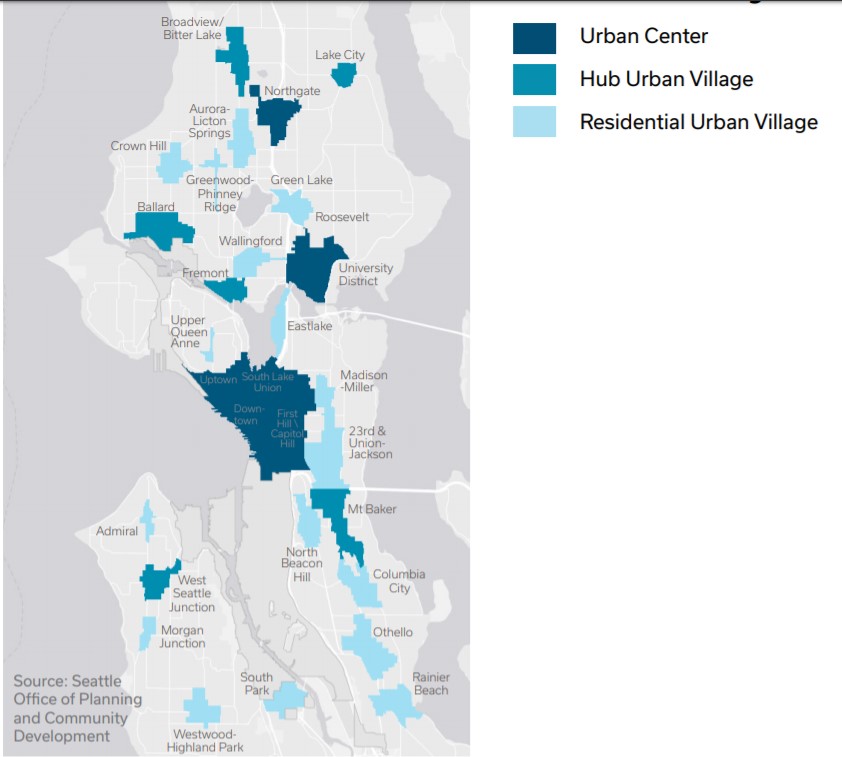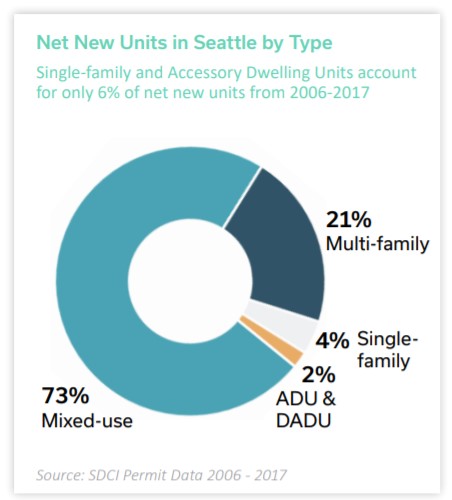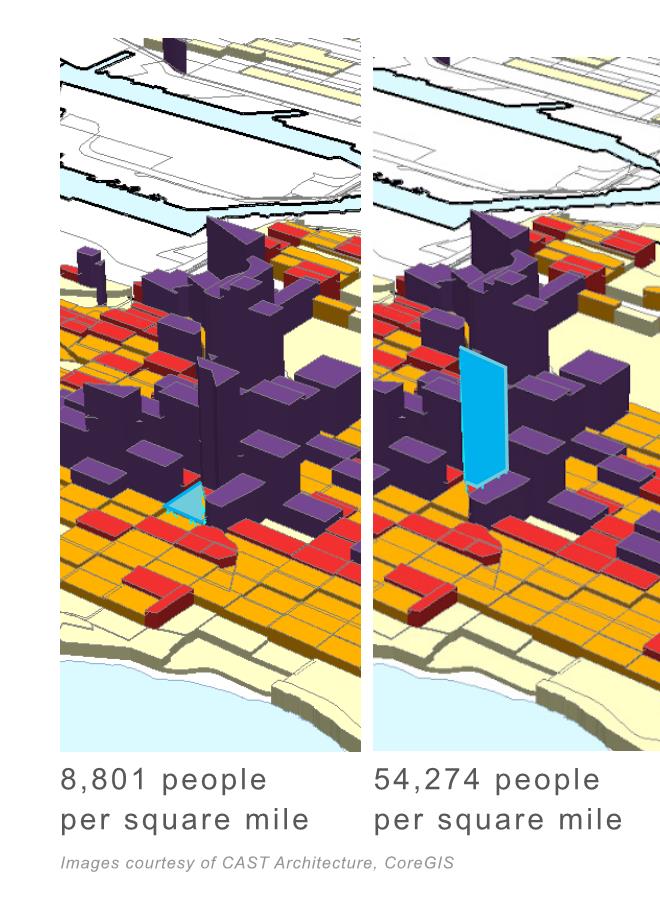
Evolving as we grow:
For the #SeattleCompPlan one big question is how to make room new people, fight climate change and undo inequities baked into Single Family vs Urban Villages.
We shouldn’t expand urban hubs, we should rethink all of it. Here’s one way:
1/7
#seattle6

For the #SeattleCompPlan one big question is how to make room new people, fight climate change and undo inequities baked into Single Family vs Urban Villages.
We shouldn’t expand urban hubs, we should rethink all of it. Here’s one way:
1/7
#seattle6


people might be shocked at a proposal to eliminate side yards in SF zoning, citing lost of trees, daylight, open space
Let’s assume we add new a ton of new households, what is the best outcome for a livable, sustainable land use pattern?
Start with a typical block:
2/7
Let’s assume we add new a ton of new households, what is the best outcome for a livable, sustainable land use pattern?
Start with a typical block:
2/7

Seattle’s narrow deep lots create opportunity in the back yard for trees, gardens, recreation.
But w/ small bumps in households per parcel, like DADUs, the only place to add housing is in the backyard. If the site is redeveloped as townhouses, most new units face sideways.
3/7
But w/ small bumps in households per parcel, like DADUs, the only place to add housing is in the backyard. If the site is redeveloped as townhouses, most new units face sideways.
3/7

It doesn’t preserves open space-but breaks up useful backyard space in to useless sideyards. It orients spaces toward neighbors rather than street or yard. Less eyes on street. And we lose more mature trees in the process
‘Gentle’ upzoning kills yards, not preserves them.
4/7
‘Gentle’ upzoning kills yards, not preserves them.
4/7
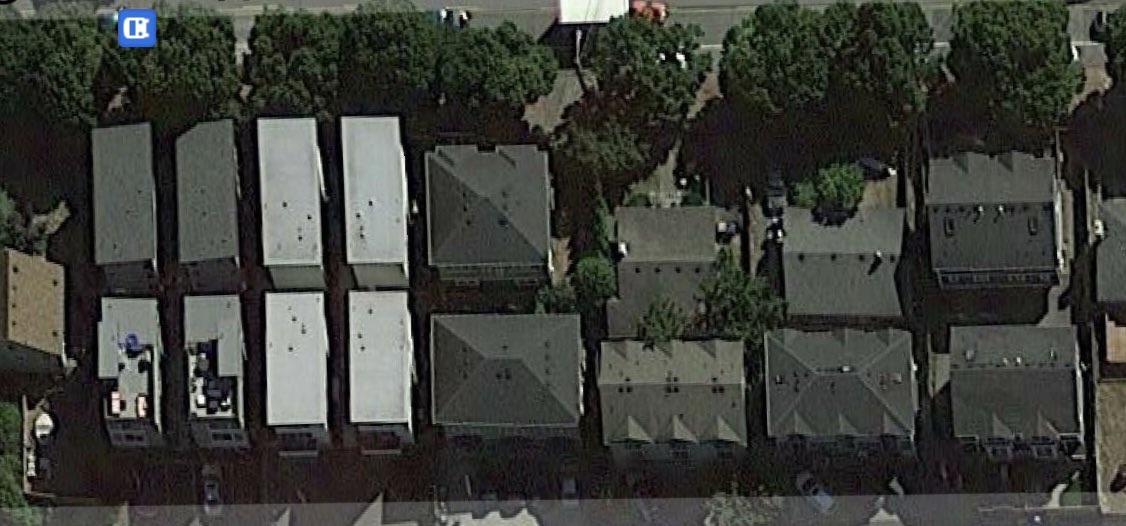
Side to side #seattle6, 8 or 10 unit ‘plexes trade sideyard for backyard. Every one of these flats looks out to street, yard or both. Yes, there is more shadow for old houses, but we’re not pitting people who need place to lives against trees & open space
5/7

5/7


In terms of number of households, we’ve gone from 20 to 48 (in the ‘gentle’ density sketch) to 70 here, but we haven’t eaten up the open space or exhausted the development capacity.
6/7
6/7

The progression after a few generations is a new pattern that balances housing and open space.
I’m not inventing anything new here-this is an ancient and popular way of living common in cities around the world-just we might not see how to get there from where we are today.
7/7

I’m not inventing anything new here-this is an ancient and popular way of living common in cities around the world-just we might not see how to get there from where we are today.
7/7
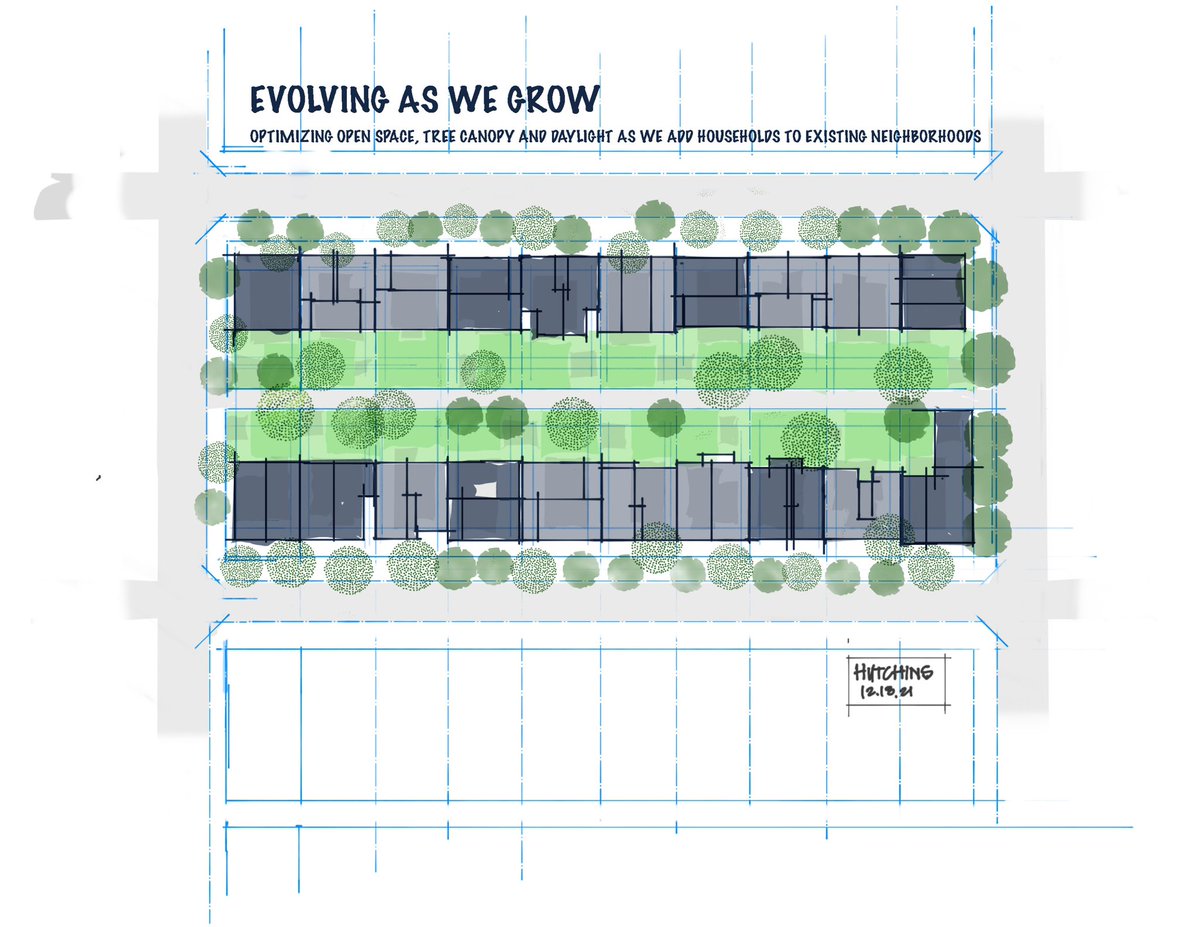

PS:
Put three of these blocks together, and you have enough kids to have a new daycare
Put six of these blocks together and have enough people for a cafe
Put ten of these blocks together, and you have enough for a 15 Minute neighborhood and lower carbon lifestyle for all.
Put three of these blocks together, and you have enough kids to have a new daycare
Put six of these blocks together and have enough people for a cafe
Put ten of these blocks together, and you have enough for a 15 Minute neighborhood and lower carbon lifestyle for all.

• • •
Missing some Tweet in this thread? You can try to
force a refresh


